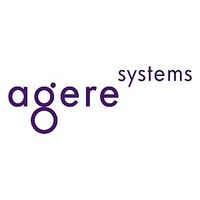T7256 Agere Systems, T7256 Datasheet - Page 54

T7256
Manufacturer Part Number
T7256
Description
(T7234 - T7256) Compliance
Manufacturer
Agere Systems
Datasheet
1.T7256.pdf
(60 pages)
Available stocks
Company
Part Number
Manufacturer
Quantity
Price
Company:
Part Number:
T72561ML
Manufacturer:
LUCENT
Quantity:
19
Company:
Part Number:
T7256A-ML
Manufacturer:
SAMSUNG
Quantity:
4 443
Part Number:
T7256ML2
Manufacturer:
LUCENT
Quantity:
20 000
Part Number:
T7256MLZ
Manufacturer:
LUCENT
Quantity:
20 000
T7234 Single-Chip NT1 (SCNT1) Euro-LITE Transceiver
Questions and Answers
Miscellaneous
Q48: What would cause the STLED indicator to flash
A48: If the T7234 S/T-interface is operating over a long
Q49: The STLED on my T7234-based NT1 behaves in
50
sporadically at an 11 Hz rate?
loop that is outside the range specified in the
I.430/T1.605 standard, the T7234 may go into a
state where it is constantly going in and out of
synchronization. This causes it to cycle between
ANSI states H7 and H8, producing STLED state
changes between 1 Hz flashing and always on.
When the S/T-interface loses synchronization, it
takes about 96 ms before synchronization can be
reacquired. This 96 ms cycle, coupled with the
STLED switching from always on to 1 Hz flashing,
can appear as 11 Hz or sporadic flashing,
depending on how frequently S/T synchronization
is being lost.
Either of these states could cause potential con-
fusion to maintenance personnel in the event that
a T7234-based NT1 is connected to an S/T loop
that is longer than permitted by the standards.
For example, an 11 Hz rate is difficult to visually
distinguish from the 8 Hz rate, but the 11 Hz case
indicates a problem on the S/T-interface and the
8 Hz case indicates a problem on the U-interface.
To troubleshoot the STLED indication, unplug the
S/T connector and repower the T7234 and initiate
a start-up on the U-interface. If there is no prob-
lem on the U-interface, the STLED will reach a
1 Hz flashing state and remain there, indicating
that the fast flashing was a result of S/T-interface
problems.
an unexpected way. When a start-up attempt is
received, it flashes at an 8 Hz rate. Then it
flashes briefly at 1 Hz, indicating synchronization
on the U-interface. This is expected. However,
after this, it starts flashing at 8 Hz, and yet it
appears as though the system is operating fine
(data is being passed end to end, etc.). Shouldn’t
the STLED signal be always low (i.e., ON) at this
point?
(continued)
(continued)
A49: Yes it should. Referring to the STLED Control
Q50: We are testing out T7234-based equipment
A50: Check to make sure that your equipment is set-
Q51: When I try to activate our T7234-based NT1, it
A51: The behavior you have observed can be caused
Flow diagram in Figure 10 of this data sheet, it
appears as though you may be receiving aib = 0
from the upstream U-interface element. This will
cause the behavior you are seeing.
against an Lucent SLC Series 5, and perfor-
mance seems OK except that we get a burst of
errors, and even drop calls, approximately every
15 minutes. Can you explain why?
ting the ps1/ps2 power status bits correctly. The
SLC equipment monitors the ps1/2 bits and, if
they are both zero (meaning all power is lost), it
assumes that there is some sort of terminal error,
since this is not an appropriate steady-state value
for ps1/2. When this condition is detected, the
SLC deactivates and reactivates the line approxi-
mately every 15 minutes. This causes the symp-
toms you describe.
appears as though the U-interface is synchroniz-
ing (i.e., STLED flashes at 1 Hz), but the S/T-
interface won’t activate, and there is not even any
signal activity on the S/T-interface (i.e., no INFO 1
or INFO 2). What might the problem be?
if the uoa bit received on the U-interface from the
network is set to 0. This causes the T7234 to acti-
vate the U-interface only, keeping the S/T-inter-
face quiet, per the ANSI and ETSI standards. We
have heard of some network equipment that
incorrectly sets this bit low.
Lucent Technologies Inc.
February 1998












